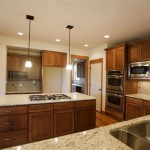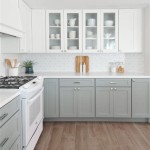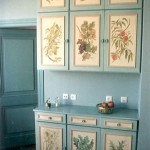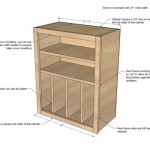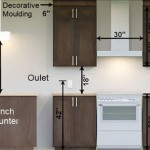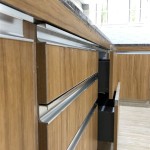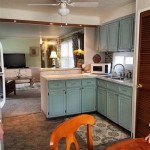Kitchen Cabinet Door Moldings: Adding Dimension and Style
Kitchen cabinet door moldings, often referred to as trim or edging, serve a dual purpose: enhancing visual aesthetics and adding structural integrity. They can transform a plain cabinet door into a decorative statement piece, subtly complementing the overall kitchen design. This article will explore the various types of moldings available, their benefits, and how to choose the right ones for your kitchen.
Types of Kitchen Cabinet Door Moldings
The world of kitchen cabinet door moldings offers a vast selection of styles to suit various aesthetics. Here are some of the most common types:
- Raised Panel Molding: This classic style features a raised center panel that creates a three-dimensional effect. It lends a traditional and elegant touch to kitchens. Common varieties include beaded, ogee, and cove moldings.
- Flat Panel Molding: As the name suggests, flat panel moldings create a simple and clean aesthetic. They are often chosen for contemporary or minimalist kitchen styles. Examples include square, rectangular, and chamfered moldings.
- Inset Molding: Inset moldings are carved into the surface of the cabinet door, creating a recessed effect. They offer a subtle yet sophisticated touch, adding depth and visual interest.
- Edge Molding: Edge moldings are applied to the edges of cabinet doors, providing a decorative finish and protecting them from wear and tear. Popular choices include beading, cove, and ogee profiles.
- Frame and Panel Molding: This type features a frame surrounding a center panel, creating a distinct look. It's often associated with traditional and cottage-style kitchens.
Benefits of Using Kitchen Cabinet Door Moldings
Beyond aesthetics, using moldings on your kitchen cabinet doors offers several practical benefits:
- Enhanced Durability: Moldings can protect the edges of cabinet doors from bumps and scratches, extending their lifespan.
- Improved Water Resistance: Some moldings, especially those with a bead or cove profile, can prevent water from seeping into the cabinet door, reducing the risk of warping or damage.
- Customization Options: The variety of molding styles and materials allows for a high degree of customization, ensuring a perfect match for your kitchen's design.
- Value Enhancement: Well-chosen moldings can add value to your home, making it more desirable to potential buyers.
Choosing the Right Kitchen Cabinet Door Moldings
Selecting the perfect moldings for your kitchen cabinets requires considering several factors:
- Kitchen Style: The overall style of your kitchen will influence the choice of moldings. Traditional kitchens often pair well with raised panel or frame and panel moldings, while contemporary kitchens often lean towards flat panel or inset moldings.
- Cabinet Door Material: The material of your cabinet doors will impact the type of molding you can use. For example, solid wood doors offer more flexibility in terms of molding options, while laminate doors might require specific edge moldings.
- Personal Preferences: Ultimately, the choice of moldings should reflect your own taste and preferences. Consider what appeals to you visually and complements the overall design of your kitchen.
When exploring your options, remember that kitchen cabinet door moldings can elevate the aesthetic appeal of your kitchen while providing practical advantages. With careful consideration, you can choose moldings that enhance the style and durability of your cabinets, creating a space that reflects your unique taste and enhances your kitchen's overall charm.

Add Moulding To Flat Cabinet Doors Home Kitchens Cabinets Diy Kitchen

Adding Molding To Old Cabinets Diy Tutorial Cabinet Doors Kitchen

Kitchen Cabinet Doors With Applied Moulding By Allstyle

Home Dzine Kitchen Add Moulding And Trim To Cabinets

Home Dzine Kitchen Add Moulding And Trim To Cabinets Kitchens Remodel Idea Redo

Plain White Melamine Kitchen Goes Coastal Door Trim Moulding Options Renovation Trims Makeover

How To Make Your Own Cabinet Doors Beneath My Heart

How To Build A Wall Cabinet And Door Angela Marie Made

Adding Molding To Cabinet Doors Google Search Redo Kitchen Cabinets Remodel Refinish

Aluminum Cabinet Door Trim Glass Doors
Related Posts


